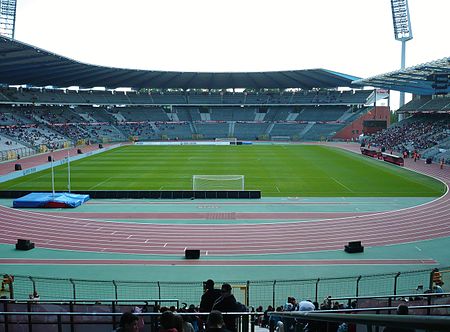King Baudouin Stadium

The King Baudouin Stadium (French: Stade Roi Baudouin [stad ʁwɑ bodwɛ̃]; Dutch: Koning Boudewijnstadion [ˌkoːnɪŋ ˈbʌudəʋɛinˌstaːdijɔn]) is a sports ground in north-west Brussels, Belgium. Located in the Heysel section of the Brussels municipality, it was built to embellish the Heysel plateau in view of the 1935 Brussels International Exposition. It was inaugurated on 23 August 1930, with Crown Prince Leopold attending the opening ceremony. The stadium hosted 70,000 at the time. A wooden track for cycling races was later added around the pitch. Its name honours Baudouin of Belgium, Leopold's son and successor as King of the Belgians, from 1951 to his death in 1993.
Excerpt from the Wikipedia article King Baudouin Stadium (License: CC BY-SA 3.0, Authors, Images).King Baudouin Stadium
Avenue de Marathon - Marathonlaan, City of Brussels
Geographical coordinates (GPS) Address External links Nearby Places Show on map
Geographical coordinates (GPS)
| Latitude | Longitude |
|---|---|
| N 50.895705555556 ° | E 4.3340833333333 ° |
Address
Stade Roi Baudouin - Koning Boudewijnstadion
Avenue de Marathon - Marathonlaan 135
1020 City of Brussels
Belgium
Open on Google Maps








